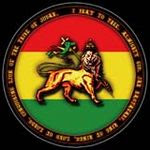It is in the Rastafari movement, with its origins in Jamaica, that Ethiopianism has been most consistently elaborated for nearly seven decades. The biblical enthronement of Ras Tafari Makonnen in 1930 as His Imperial Majesty, Emperor Haile Selassie I, King of King, Lord of Lords, and Conquering Lion of the Tribe of Judah was an event widely reported throughout the European and colonial world. It was the ensuing interpretation of the Solomonic symbols by which Ras Tafari took possession of a kingdom with an ancient biblical lineage which transformed Ethiopia into an African Zion for the nascent Rasta movement. The independence of Ethiopia as one of only two sovereign nations on the African continent ensured Selassie's placement at the symbolic center of the African world throughout the colonial and much of the post-colonial period. Indicative of this is the fact that the Organization of African Unity (founded in 1963), is headquartered in Addis Ababa, Ethiopia. To this day, it is the biblical imagery associated with the theocratic kingdom of Ethiopia which fuels a Rastafari vision of nationhood and underlies their deification of Emperor Haile Selassie.
Today, it is probably fair to say that when most people hear the word "Rastafari" they think of Bob Marley, the "king of reggae." Through his inspirational music, Marley did more to popularize and spread the Rasta message worldwide than any other single individual. But neither Marley or reggae represents the roots of the Rastafari experience. Reggae, as a music of populist black protest and experience which has had a formative experience upon Jamaican nationalism, emerged in Jamaica only during the early 1970s. For at least three decades previous to this, Rastafari in Jamaica were evolving an African-oriented culture based on their spiritual vision of repatriation to the African homeland.
The "Roots" or Elders of the movement have built upon earlier sources of African cultural pride, identification, and resistance such as those embodied by Jamaica's Maroons --runaway slaves who formed independent communities within the island's interior during the 17th century. Rastafari, in fact, must be seen as a religion and movement shaped by the African Diaspora and an explicit consciousness that black people are African 'exiles" outside their ancestral homeland. As one Rasta Elder stated, "Rastafari is a conception that was born at the moment that Europeans took the first black man out of Africa. They didn't know it then, but they were taking the first Rasta from his homeland."
From the early 1930s, Rastafari in Jamaica have developed a culture based on an Afrocentric reading of the Bible, on communal values, a strict vegetarian dietary code known as Ital, a distinctive dialect, and a ritual calendar devoted to, among other dates, the celebration of various Ethiopian holy days. Perhaps the most familiar feature of Rastafari culture is the growing and wearing of dreadlocks, uncombed and uncut hair which is allowed to knot and mat into distinctive locks. Rastafari regard the locks as both a sign of their African identity and a religious vow of their separation from the wider society they regard as Babylon . In the island of its birth, Rasta culture has also drawn upon distinctive African-Jamaican folk traditions which includes the development of a drumming style known as Nyabinghi . This term is similarly applied to the island-wide gatherings in which Rastafari brethren and sistren celebrate the important dates on an annual calendar.
With the advent of reggae, this deeper "roots culture" has spread throughout the Caribbean, to North American and European metropolis such as London, New York, Amsterdam, Toronto, and Washington, D.C., as well as to the African continent itself. This more recent growth and spread of the movement has resulted from a variety of factors. These include the migration of West Indians (e.g., Jamaicans, Trinidadians, Antiguans) to North America and Europe in search of employment, the travel of reggae musicians, and the more recent travel of traditional Rastafari Elders outside Jamaica. At the same time, many African American and West Indian individuals who have become Rastafari outside Jamaica now make "pilgrimages" to Jamaica to attend the island-wide religious ceremonies known as Nyabinghi and to seek out the deeper "roots culture" of the movement. Despite the fact that Rastafari continue to be widely misunderstood and stigmatized outside Jamaica, the movement embraces a non-violent ethic of "peace and love" and pursues a disciplined code of religious principles.
Since 1992 and the 100th anniversary of Haile Selassie's birth, the Rastafari settlement in Shashamane, Ethiopia (part of a land grant given to the black peoples of the West by Emperor Haile Selassie in 1955) has come to serve as a growing focal point for the movement's identification with Africa.
Recent Posts
Friday, December 25, 2009




Interesting info.
Happy new year
ndio hali halisi mkku Chib.